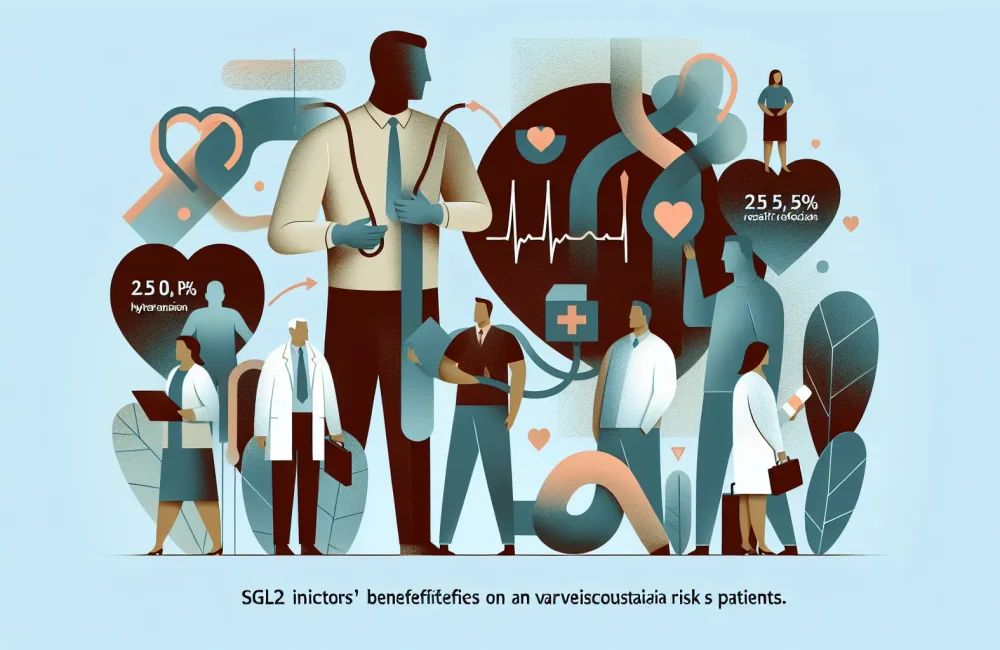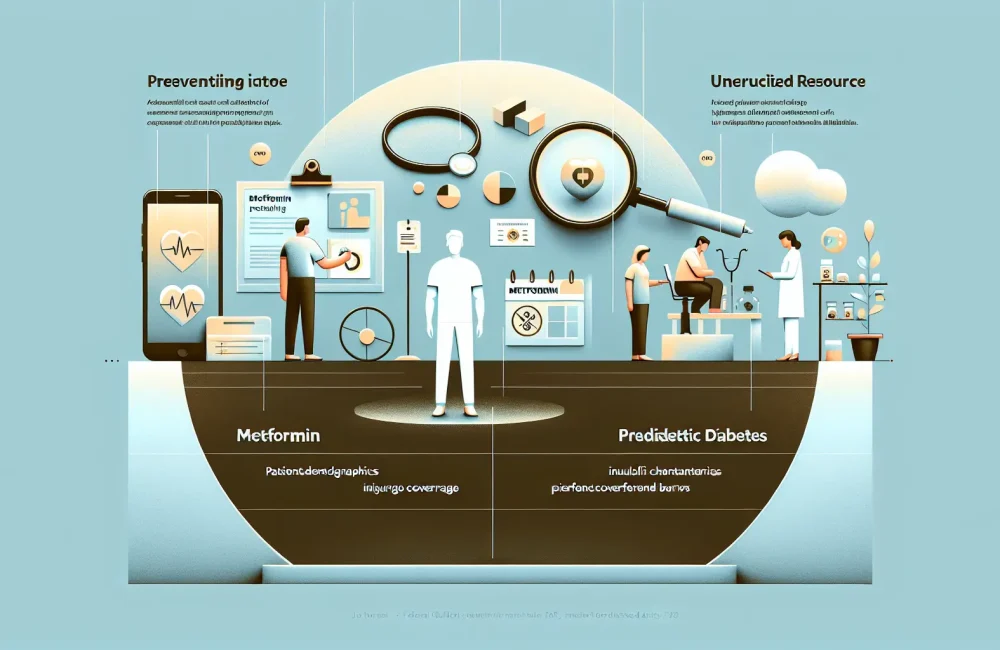By CAFMI AI From Journal of General Internal Medicine
SGLT2 Inhibitors Significantly Lower Cardiovascular Risk in Diabetes
Sodium-glucose cotransporter 2 inhibitors (SGLT2i) have emerged as a vital class of medications in managing type 2 diabetes mellitus (T2DM), particularly due to their benefits beyond glucose control. This nationwide cohort study examined the cardiovascular protective effects of SGLT2i in patients with T2DM, focusing specifically on whether the presence of hypertension modifies these benefits. Using extensive health insurance data, the study identified adult T2DM patients initiating SGLT2i therapy and classified them according to the presence or absence of hypertension. The primary composite outcome, termed major adverse cardiovascular events (MACE), comprised myocardial infarction, ischemic stroke, and cardiovascular death. The study utilized multivariable Cox proportional hazards models that adjusted for a range of factors including demographics, existing comorbid conditions, and concurrent medication use, ensuring robust adjustment for potential confounders. Results demonstrated that the use of SGLT2i was associated with a notable reduction in cardiovascular events: a 25% relative risk reduction in patients with hypertension and a 20% reduction in those without hypertension. These findings confirm that SGLT2 inhibitors confer significant cardioprotective benefits in a broad diabetic population, regardless of hypertensive status. Subgroup analyses further revealed consistent benefits across different age groups, sexes, and baseline cardiovascular risk levels, reinforcing the generalizability of the findings. Clinicians should recognize the importance of incorporating SGLT2i into therapeutic regimens for T2DM patients to mitigate cardiovascular risk regardless of hypertension presence, underlining their versatile role in diabetes care.
Clinical Implications and Practical Considerations for SGLT2i Use
This study’s outcomes carry important clinical implications for healthcare providers managing patients with T2DM. Cardiovascular disease remains the leading cause of mortality among diabetic patients, making effective prevention strategies critical in primary care and endocrinology settings. The demonstrated risk reductions of MACE by 20% to 25% with SGLT2i use imply that these agents should be considered not only for glycemic control but also as a key component of cardiovascular risk management. The benefits were observed consistently across patient subgroups, including variable age, sex, and cardiovascular risk profiles, suggesting that clinicians can safely consider SGLT2i for a wide range of patients. Patients with both diabetes and hypertension, a common comorbid pairing, demonstrated even greater relative risk reduction, emphasizing the value of SGLT2i in this subgroup who are traditionally at higher cardiovascular risk. Physicians should carefully evaluate individual patient profiles, including renal function and potential contraindications, when initiating SGLT2i therapy. Furthermore, the safety profile and ease of administration typically promote adherence in outpatient settings. Primary care workflows can incorporate SGLT2i initiation as part of comprehensive cardiovascular risk reduction bundles, combining lifestyle interventions with pharmacotherapy. Given the retrospective and observational nature of the study, clinical guidelines may consider this evidence alongside randomized controlled trial data to reinforce recommendations. Patient counseling should highlight not only glucose control benefits but also substantial heart and stroke risk reduction to optimize adherence and long-term outcomes.
Study Strengths, Limitations, and Future Directions in SGLT2 Research
The study’s use of a large, nationwide health insurance cohort provides significant strengths, including high generalizability and real-world data reflecting everyday clinical practice. The robust sample size enabled precise effect estimates and subgroup analyses across diverse populations. However, inherent limitations exist given the retrospective observational design, including potential residual confounding despite adjustment for multiple variables. Data were derived from administrative records, which may lack detailed clinical parameters such as exact blood pressure measurements or diabetes duration, potentially influencing cardiovascular risk stratification. The study did not differentiate among specific SGLT2 inhibitors, which may have varying effects, nor did it assess long-term safety outcomes beyond cardiovascular events. Future research should focus on prospective studies or randomized clinical trials to confirm these findings, explore mechanistic pathways of cardioprotection, and assess effects on additional outcomes like heart failure hospitalizations and kidney function preservation. Additionally, health economic evaluations and patient-centered outcomes would enrich clinical decision-making. Clinicians should remain updated on evolving evidence and guideline changes to optimize SGLT2i use within holistic diabetes care. Ultimately, integrating SGLT2 inhibitors into treatment paradigms offers a promising strategy to reduce cardiovascular morbidity and mortality, particularly among the high-risk diabetes population with or without hypertension.
Read The Original Publication Here






